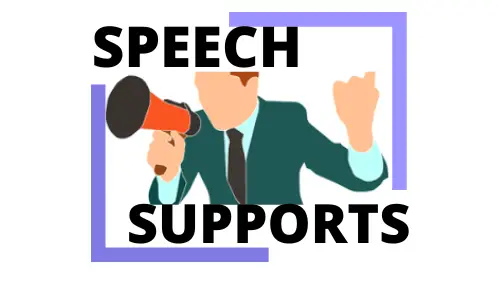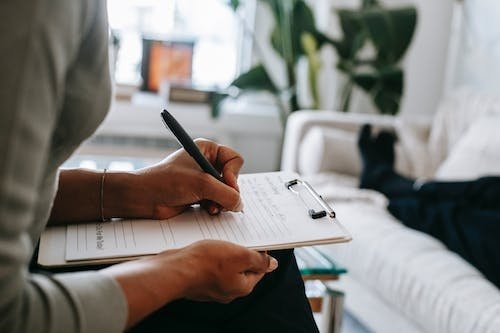Crafting an engaging introduction is an art, and one powerful technique to achieve this is by employing various types of hooks. A well-executed hook not only draws readers into your narrative but also sets the tone for the entire piece.
In this article of writing dynamics, we delve into the five distinct types of hooks that writers use to captivate their audience and make a lasting impression. From anecdotes to thought-provoking questions, these hooks serve as the literary bait that invites readers to immerse themselves in the world of words.
5 types of hooks for writing

Hooks are opening lines or paragraphs in writing that are designed to grab the reader’s attention and draw them into the piece. Here are five types of hooks commonly used in writing:
- Question Hook: Pose a thought-provoking question to engage your readers. It encourages them to think about the topic and creates a sense of curiosity. For example:
- “Have you ever wondered what life would be like if we could travel back in time?”
- Quotation Hook: Begin with a relevant and impactful quote that sets the tone for your writing. This could be a famous saying, a line from literature, or even a statement from someone related to the topic. For instance:
- “In the words of Albert Einstein, ‘Imagination is more important than knowledge.’ How can these words shape our understanding of education?”
- Anecdotal Hook: Start with a short, interesting story or anecdote that relates to the subject matter. Personal stories or vivid descriptions can create a connection between the writer and the reader. Here’s an example:
- “When I was six years old, I discovered a hidden treasure in my grandmother’s attic. Little did I know, that dusty old box held the key to a family mystery.”
- Surprising Statistic or Fact Hook: Present a surprising or intriguing statistic or fact that captures the reader’s attention. This can be a powerful way to convey the importance or significance of your topic. For example:
- “Did you know that the average person spends over two years of their life waiting in line? What if that time could be reclaimed for more meaningful pursuits?”
- Descriptive Hook: Use vivid and descriptive language to paint a picture for your readers. Engage their senses and create a strong mental image. This type of hook works well when setting the scene for a narrative or descriptive piece. For instance:
- “The sun dipped below the horizon, casting a warm, golden glow across the tranquil lake. As the first stars appeared in the evening sky, a gentle breeze whispered through the trees, carrying with it the promise of a quiet and reflective night.”
Experimenting with these different types of hooks can add variety and intrigue to your writing, helping to captivate your audience from the very beginning.
What is a narrative hook and why use it?
A narrative hook is a literary device used at the very beginning of a story to grab the reader’s attention and engage them in the narrative. It’s a technique employed by writers to create curiosity and compel the reader to continue reading.
The narrative hook is typically found in the opening lines or paragraphs of a story and serves to set the tone, establish the central conflict, or introduce a compelling element that piques the reader’s interest.
The primary purpose of a narrative hook is to draw readers into the story immediately and encourage them to invest their time and interest in the unfolding plot. By creating an element of intrigue or posing a question, the narrative hook captivates the reader’s attention and entices them to read on to discover more about the characters, events, or situations introduced.
Some common forms of narrative hooks include:
- Action Hooks: Start the story with an immediate and engaging action or event. This can be a dramatic moment that raises questions and generates interest.
- Mystery Hooks: Introduce a mystery or an enigma that needs to be solved, prompting the reader to continue reading to unravel the mystery.
- Dialogue Hooks: Begin with a compelling piece of dialogue that sparks interest or hints at conflict, setting the stage for what’s to come.
- Character Hooks: Introduce a fascinating or unusual character right from the start, making readers curious about their background, motivations, or role in the story.
- Setting Hooks: Create a vivid and intriguing setting that captures the reader’s imagination, making them want to explore more about the world you’ve described.
Using a narrative hook is important because it helps to establish a strong connection between the reader and the story from the very beginning. In a world with a myriad of distractions, a well-crafted narrative hook can make the difference between a reader deciding to invest time in a story or moving on to something else.
It sets the tone, raises questions, and creates a sense of anticipation, all of which contribute to the overall engagement and enjoyment of the narrative.
Surprising facts or stats effective hooks

Surprising facts or statistics can be highly effective as hooks in writing because they immediately capture the reader’s attention and create a sense of curiosity.
When people encounter information that challenges their assumptions or introduces them to something unexpected, they are more likely to be intrigued and motivated to continue reading.
Here are a few examples to illustrate how surprising facts or stats can be used as effective hooks:
- Informative Hook:
-
- “In the next 60 seconds, more than 300 hours of video content will be uploaded to YouTube. As the digital landscape continues to evolve at an unprecedented pace, what does this mean for the way we consume information and entertainment?”
- Revelatory Hook:
-
- “Contrary to popular belief, studies show that elephants are capable of recognizing themselves in a mirror, a cognitive ability once thought to be exclusive to humans and great apes. What other remarkable qualities might these majestic creatures possess?”
- Counterintuitive Hook:
-
- “Did you know that procrastination can be a productivity booster? Recent research suggests that taking short breaks and delaying tasks strategically can lead to more creative problem-solving. How can we harness the power of procrastination for greater efficiency?”
- Comparative Hook:
-
- “The number of mobile phones in use worldwide exceeds the global population. In a world seemingly obsessed with connectivity, what does this mean for our relationships, both virtual and real?”
- Historical Perspective Hook:
-
- “During the Great Depression, the chocolate industry thrived. As millions struggled with economic hardship, chocolate sales soared. What role did this sweet indulgence play during one of the darkest periods in modern history?”
When using surprising facts or stats as hooks, it’s essential to ensure that the information is relevant to the overall theme or subject of your writing. Additionally, consider how the fact or statistic aligns with the tone and style of your piece.
The goal is not just to shock the reader but to use the surprise element as a gateway to explore deeper insights, raise questions, or present a unique perspective on the topic at hand.
Why use humor as a hook?
Using humor as a hook in writing can be an effective strategy for several reasons:
- Captures Attention: Humor is attention-grabbing. A well-crafted joke or witty remark at the beginning of a piece immediately captures the reader’s attention, making them more likely to continue reading.
- Creates Connection: Humor can create a sense of connection between the writer and the reader. When people laugh or smile, they often feel a positive connection, and this connection can enhance the reader’s engagement with the material.
- Relieves Tension: If your writing tackles a serious or complex topic, a touch of humor can help to break the tension. It provides a moment of relief for the reader and can make the content more approachable.
- Enhances Memorability: People tend to remember things that make them laugh. If your writing includes humor, it’s more likely to stick in the reader’s memory, making your message more memorable.
- Establishes Tone: Humor can set the tone for the entire piece. It can signal to the reader that the writing is approachable, lighthearted, or even satirical, depending on the style of humor employed.
- Engages Emotions: Humor engages emotions, and writing that evokes an emotional response is often more compelling. Whether it’s through clever wordplay, a humorous anecdote, or a playful tone, humor can make the reader feel more connected to the material.
- Encourages a Positive Reading Experience: Reading can be an enjoyable experience, and humor contributes to this enjoyment. If your writing is entertaining, readers are more likely to stay engaged and have a positive perception of your work.
It’s important to note that using humor effectively requires an understanding of your audience and the context of your writing. What one person finds funny, another might not, and inappropriate or offensive humor can have negative consequences.
Additionally, the humor should align with the overall tone and purpose of your piece. Used judiciously, humor can be a powerful tool to enhance your writing and create a more enjoyable and memorable reading experience for your audience.

Significance of a personal anecdote as a writing hook
A personal anecdote can be a powerful and effective writing hook for several reasons:
- Relatability: Personal anecdotes often involve real-life experiences, making them relatable to readers. When people can connect with a story on a personal level, it creates an immediate bond between the writer and the audience.
- Emotional Connection: Anecdotes can evoke emotions. Whether it’s humor, sadness, joy, or empathy, personal stories have the ability to tap into readers’ emotions, drawing them into the narrative and making the writing more memorable.
- Engagement: Starting with a personal anecdote captures the reader’s attention from the beginning. If the story is compelling, readers are more likely to be engaged and invested in the rest of the piece.
- Authenticity: Sharing a personal story adds an element of authenticity to your writing. It humanizes the author and can create a sense of trust between the writer and the audience.
- Illustration of Theme or Point: A well-chosen anecdote can serve as a metaphor or illustration for the theme or point you want to convey in your writing. It provides a concrete example that helps readers better understand and connect with the underlying message.
- Memorability: Personal stories are often more memorable than abstract information or statistics. Readers are more likely to remember a narrative that resonates with them personally.
- Establishing Voice: Using a personal anecdote can help establish the writer’s voice. It allows the author to showcase their personality, style, and perspective, creating a unique and authentic tone for the piece.
- Setting the Tone: Anecdotes can set the tone for the entire piece. Depending on the nature of the story, the tone could be humorous, reflective, inspiring, or serious, shaping the reader’s expectations for the rest of the writing.
Remember, the key to a successful personal anecdote as a writing hook is relevance. It should connect to the main theme or point of your piece, helping to draw readers in and set the stage for the content that follows.
Conclusion
You can get to learn a lot on 5 types of hooks for writing on this page. The use of various hooks in writing serves as a dynamic tool to captivate readers from the outset. Whether employing a thought-provoking question, a compelling quote, a vivid description, a surprising fact, or a personal anecdote, each type of hook brings its own unique flair to the introduction.
The choice of hook depends on the writer’s intention and the nature of the content, but regardless of the approach, a well-crafted hook has the power to engage, resonate, and set the tone for a memorable reading experience.

